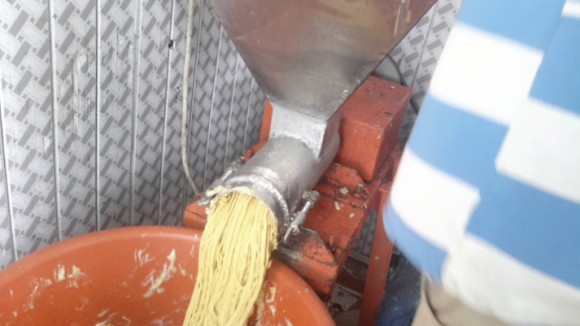Gossip
The contemporary phase of fufu making
The meal fufu is a staple and delicacy among most tribes in Ghana. Traditionally, a lot of time is spent in preparing it with the traditional wooden mortar-and-pestle approach to convert tubers into fufu.
Characteristically, the pounding of fufu on a regular basis has led to the hardening of many palms and many find the exercise rather laborious and, perhaps, unhygienic.
However, in recent times, there has been a transformation in its preparation as efforts continue to be made to do away with the pounding to make it less labour intensive.
It first started with the preparation of a powder mix, which significantly cuts the preparation time and effort, while allowing users to transport the flour to other jurisdictions.
In recent times, however, tertiary technical educational institutions and technology companies are fast devising new ways of pounding fufu in a way that shortens the process, but preserves the original taste and composition of the staple food.
Some polytechnics and the Kwame Nkrumah University of Science and Technology (KNUST) have assembled machines that are capable of preparing fufu within minutes.
As the invention gets popular with the people, artisans, particularly metal fabricators, has taken the opportunity to cash in with the manufacture of various versions of the machine to satisfy demand.
Cost of the machine
GRATIS Foundation, leader in the designing, manufacturing and selling of agro food processing and sanitation equipment, has been producing fufu pounding machines for about three years now.
The Production Manager of GRATIS, Mr Patrick Quansah, told the paper that the idea for the manufacture of the fufu-pounding machine was to eliminate the drudgery in fufu pounding.
He said that of GRATIS was made of red wood unlike other metal types on the market.
“So we based our concept on the traditional model of preparing fufu in a mortar and pestle by using red strong wood which also makes it easy to clean with steel sponge,” he said.
For now, he said, GRATIS’s fufu machine comes in commercial size and that, “Next step we are looking at producing for domestic use. The concept will be slightly different and we are looking at it like the size of a blender so that at least it can process for a family of two or three.”
The GRAPHIC BUSINESS gathered that the machine cost between GH¢1,500 and GH¢4,500 depending on the type of engine.
The GRATIS fufu-pounding machine with an electric engine sells at GH¢1800 and one with a petrol engine at GH¢2,000.
“Our machines are durable because we use wood that can last for sometime. For the past three years we have not had any complaints from our patrons. In terms of maintenance, there are only some few things that need to be changed after three years such as the bearing and the rasper,” he said.
How the machine works
Operators say the machine equally gives the option to pound the cassava, yam or plantain separately, as is done traditionally with the mortar and pestle, and then put together to obtain the desired blend.
Intermittently, water is sprinkled on the paste to soften it.
Most fufu machine operators told the GRAPHIC BUSINESS that the machine was gradually becoming the preferred choice for the preparation of fufu for most homes.
They said hitherto chop bar operators were their main patrons but in recent times individual homes were also pounding fufu in the machines.
“Most individuals come to pound their fufu in the machine for their households, particularly during weekend, while chop bar operators are our major clients during the week,” an operator at the Adabraka market in Accra said.
The amount charged for pounding fufu in the machine depends on the amount of plantain and cassava or yam to be pounded. The least charge is GH¢1.
Another operator at Madina, Adams, said he made about GH¢100 in a week and about GH¢300 during the weekend alone.
Some chop bar operators found it economical as they hitherto paid between GH¢25 and GH¢35 daily to the one who pounded the fufu.
However, other operators said they still used mortar and pestle to pound fufu because some of their clients preferred that to machine-prepared fufu.
“Our customers often ask if we pound the traditional way or we use the machine. We also believe it is hygienic than the one from the machine because one is able to thoroughly wash the mortar and pestle used,” Irene of Nobles Restaurant at Adabraka said.
A trader at the Adabraka market told the GRAPHIC BUSINESS that since the fufu machine came into being, she hardly pounded fufu the traditional way.
According to her, fufu prepared by the machine could be kept for a longer time than the traditional one.
Maintaining the machine
Contrary to fears that the machine may not be kept clean and under hygienic conditions, most operators said they dismantled it daily and clean it thoroughly.
Experts also say the invention of the fufu-pounding machine would go a long way to preserve the country’s forests as people would no longer depend on the pestle and mortar obtained from wood.
Among challenges involved in using fufu machine is the high cost of power. GB
Writer’s email: ama.baafi@graphic.com.gh
















